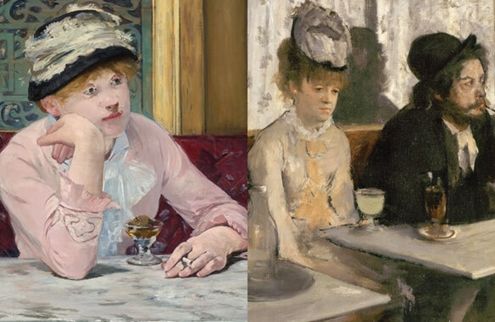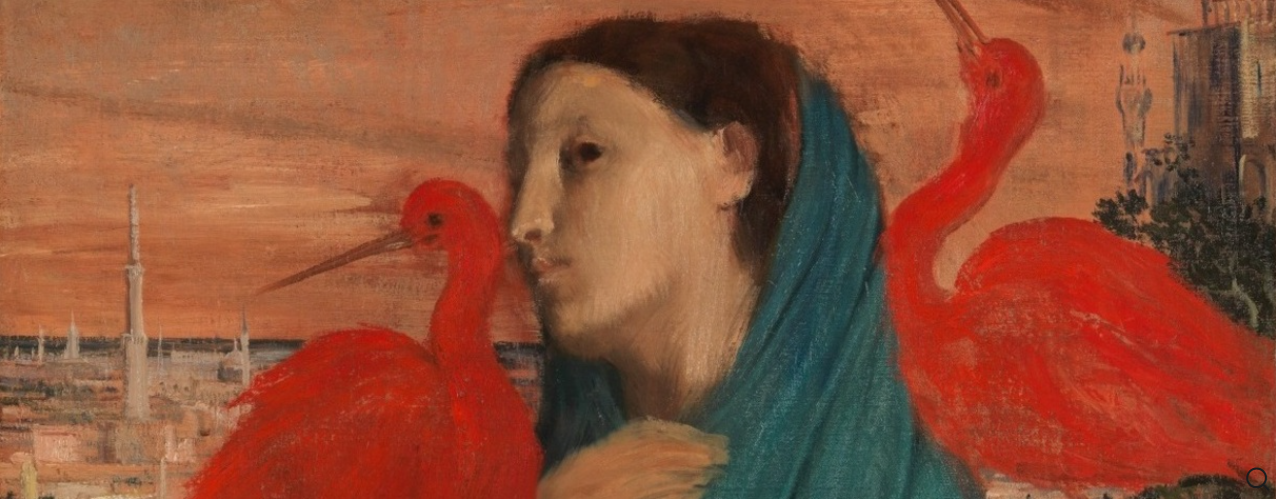Manet/Degas at the Metropolitan Museum of Art
Exhibition

Manet and Degas
Metropolitan Museum of Art
1000 Fifth Avenue
New York City, US 10028
September 24, 2023 - January 7, 2024
The Metropolitan Museum of Art is presenting through January 7 an exceptional exhibition co-organized with the Musée d’Orsay devoted to the relationship between two giants of modern art: Édouard Manet (1832-1883) and Edgar Degas (1834-1917). The exhibition brings together more than 150 paintings and works on paper of these two giants of modern art, deepening our understanding of a key moment in nineteenth-century French painting.

Edgar Degas (18341917) Jeune femme à l’Ibis, 185758 The Metropolitan Museum of Art, New York, EtatsUnis © The Metropolitan Museum of Art
An extraordinary result of an unprecedented partnership between two major museums on opposite sides of the Atlantic, the exhibition Manet/Degas takes a fresh look at the interactions of two artists who played a pivotal role in the new painting of the 1860s-80s in the context of the family relationships, friendships, and intellectual circles that influenced their artistic and professional choices. By bringing Manet and Edgar Degas together in the light of their contrasts and showing how much they defined each other by differentiating themselves, this exhibition, rich with masterpieces never before brought together, forces us to take a new look at their ephemeral bond and lasting rivalry. It shows the heterogeneous and conflicting nature of pictorial modernity and reveals the value of Degas’ collection, in which Manet occupied a larger place after the latter’s death.
A comparison of artists as crucial as Manet and Degas should not be limited to identifying the similarities in their respective bodies of work. Admittedly, there is no lack of analogies among these key players in the new painting of the 1860s-80s when it comes to the subjects they imposed (from horse races to café scenes, from prostitution to the tub), the genres they reinvented, the realism they opened to other formal and narrative potentialities, the market and the collectors they managed to tame, and the places (cafés, theaters) and circles, whether comprised of family (Berthe Morisot) or friends, where they crossed paths.
Before and after the birth of Impressionism, which the exhibition looks at in a new light, what differentiated or opposed them is even more striking. From dissimilar backgrounds and with different temperaments, they did not share the same tastes in literature and music. Their divergent choices in terms of exhibitions and career cooled the budding friendship that bound them from 1873-1874 – a friendship strengthened by their shared experience of the Franco-Prussian war of 1870 and the aftermath of the Commune. The quest for recognition of the former with the stubborn refusal of the latter to use the official channels of legitimization defy comparison. While, if we consider the private sphere, once the years of youth were over, everything divided them. Manet’s sociability, which was very open and soon quite brilliant, and his domestic choices were matched by Degas’ secret existence and his restricted entourage.
The exhibition circuit also highlights the conflicting, heterogeneous and unforeseen aspects of pictorial modernity, at its point of emergence, its rise and its subsequent success. Finally, it shows the heterogeneous and conflicting nature of pictorial modernity and reveals the value of Degas’ collection, in which Manet occupied a larger place after his death.
This exhibition is organized by the Musée d’Orsay and the Metropolitan Museum of Art, New York where it will be presented from September 2023 to January 2024.
